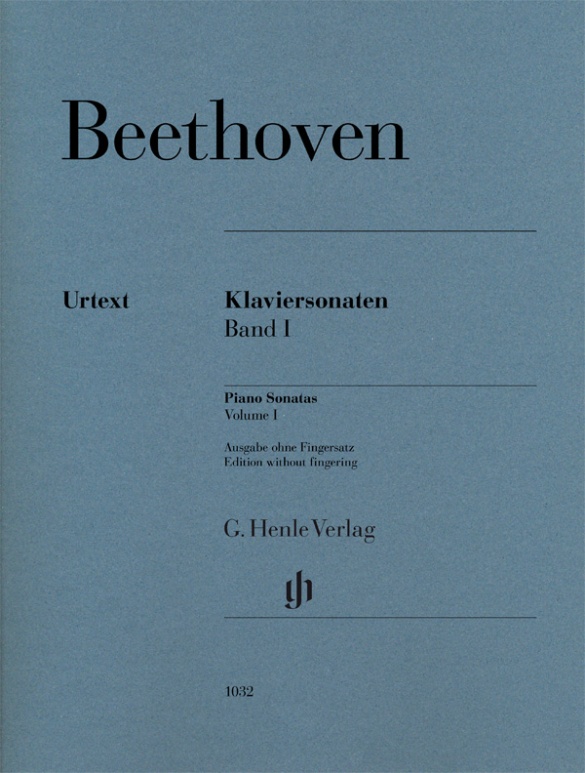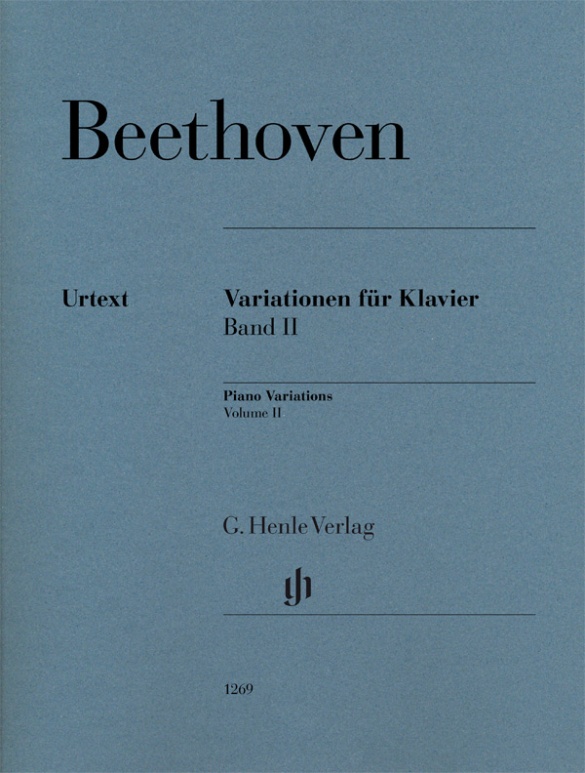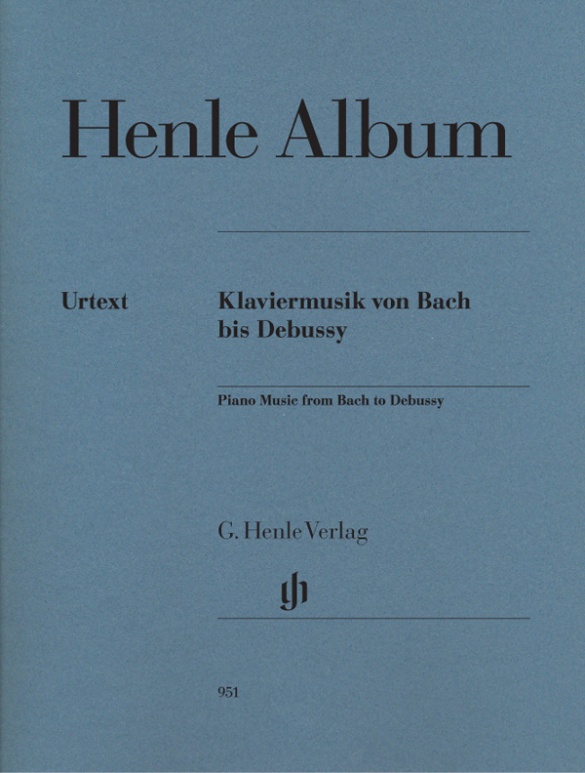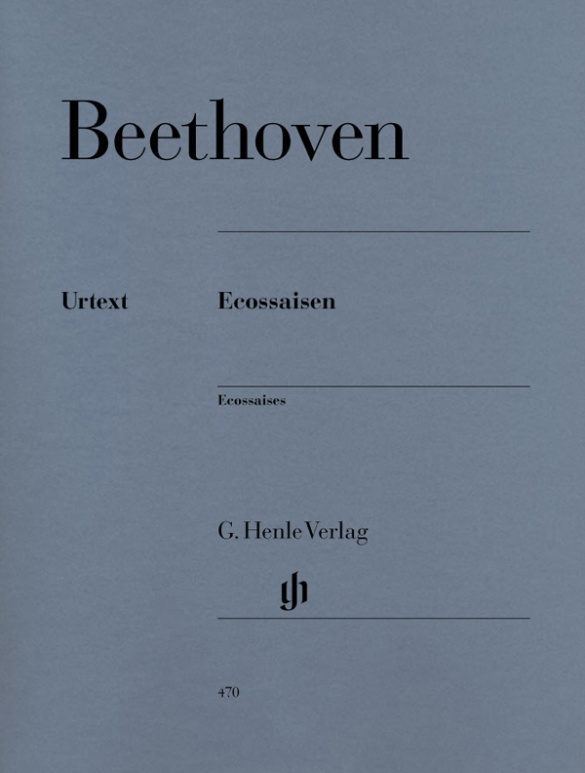Ludwig van Beethoven
Piano Sonatas, Volume I
For decades, the two-volume Henle Urtext edition of Beethoven’s piano sonatas has maintained its status across the globe as the standard edition of reference among pianists. After its publication at the beginning of the 1950s, edited by the Munich musicologist Bertha Antonia Wallner – with the support of the Beethoven Archive in Bonn – this outstanding editorial achievement was quickly recognised by the world of pianists as a new benchmark. Its decades-long, rigorous field testing led to improvements and refinements such that this Henle Urtext edition of Beethoven’s piano sonatas is universally regarded today as the reference source.The printed fingerings provided by the pianist and important musical pedagogue Conrad Hansen are regarded as meaningful suggestions for solving technical and musical problems: “as few fingerings as possible, albeit instructive ones” (Hansen).G. Henle Publishers also offers the Beethoven sonatas in an alternative Urtext print edition without any fingerings (HN 1032 and HN 1034), as well as a pocket score in our study score series (HN 9032 and HN 9034) And interested parties may also find the sonatas in the digital version in the “Henle Library” app, here in conjunction with a variety of subjective, selectable fingerings by the likes of Eugen d’Albert, Claudio Arrau, Conrad Hansen and Artur Schnabel.Beethoven’s 32 piano sonatas unfurl before us a virtually inexhaustible wealth of pianistic and musical flights of fancy, predominantly works of the greatest familiarity in piano lessons, concert halls, and recordings. Hans von Bülow emphasised the importance and significance of Beethoven’s piano sonatas with his bon mot that they constituted the “New Testament of music.” The 32 sonatas with opus numbers are a conscious choice; the three “Electoral” Sonatas by the thirteen-year-old boy, WoO 47, are not included in the “New Testament.” These are available from Henle in a separate Urtext edition (HN 255). G. Henle Publishers also offers every Beethoven sonata as a standalone Urtext edition (in print or in the app).The features of the Beethoven piano sonatas in Henle Urtext editions at a glance:- a scholarly, critical Urtext edition on the basis of all available sources, always kept up-to-date- optimisations of the musical score as a result of continuous usage in musical practice- all important information about musical passages included in footnotes on the same page- notational settings of unmatched beauty and accuracy thanks to traditional musical hand-engraving- fingering suggestions by Conrad Hansen (alternatives in the app)- available in two collected volumes with fingerings, paperbound or clothbound- available without fingerings, paperbound- each sonata also available separately (in print and in the app)In order to satisfy the increasing need for more heavily annotated Urtext editions, but also in order to document the eminent Beethoven knowledge of one of the greatest living pianists of our age, Murray Perahia, G. Henle Publishers has for some time now been gradually publishing the complete Beethoven sonatas in a parallel Urtext edition, the Perahia Edition.
内容/詳細
作曲家について
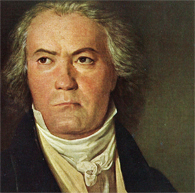
Ludwig van Beethoven
No composer has had as profound and sustained an influence on immediately following generations to the present day as Beethoven. His instrumental music, especially his symphonies, served as touchstones for symphonic composition throughout the nineteenth century. The extraordinarily high standard of his music and his relative independence as a freelance composer have led to his being characterized as the greatest composer of all time.
| 1770 | Baptized in Bonn on December 17, thus probably born on December 16, the son of Johann van Beethoven, a tenor in the court chapel of the prince-elector. First musical instruction from his father. |
| 1778 | First public performance. |
| around 1780 | Musical training with the deputy court organist Christian Gottlob Neefe, who in 1783 presented him in Cramer’s “Magazin der Musik” as a second Mozart. |
| 1782 | Acquaintance with the Breuning family, where his literary interest is aroused. First publication: Piano Variations in C minor on a March by Dressler, WoO 63. |
| 1783 | Harpsichordist in the court chapel; 1784 assistant to the court organist. |
| 1787 | Journey to Vienna. Here he very likely meets Mozart, who probably gives him some lessons. After a short while he must return home to his mother, who is ill with tuberculosis. |
| 1792 | He travels a second time to Vienna, where he will remain until the end of his life. Count von Waldstein sends him on his way with the famous words: “With steady diligence you will receive Mozart’s spirit from Haydn's hands.” In Vienna he studies with Haydn, Albrechtsberger, Schuppanzigh, and Salieri. As a pupil of Joseph Haydn, he achieves extraordinary recognition among the Viennese nobility and receives financial support. Great demand for his compositions from publishing houses: chamber music and piano sonatas from the Bonn and early Viennese years are issued. His first works printed in Vienna (among them the piano sonatas, Op. 2) already bear the hallmark of his compositional style: a forward-advancing, spirited, process-related character. |
| 1796 | Concert tours to Prague, Berlin, Leipzig, and Dresden, which cement his fame. |
| 1798 | Piano Sonata in C Minor, “Pathétique,” Op. 13. |
| 1798–1800 | String quartets, Op. 18. |
| 1799/1800 | Symphony No. 1 in C major, Op. 21 |
| 1795/1800 | Piano Concerto No. 1 in C major, Op. 15 |
| 1800–01 | Piano sonatas, Op. 27, “quasi una fantasia,” including the Moonlight Sonata, Op. 27 No. 2. |
| 1801 | Composition of the Symphony No. 2 in D major, Op. 36 (until 1802). Publication of the Piano Concerto No. 2 in B-flat major, Op. 19. |
| 1801/02 | Crisis brought on by incipient hearing loss, documented in the “Heiligenstadt Testament.” Thereafter he begins, by his own admission, a “New Path” in his compositions, reflected particularly in the piano sonatas, Op. 31 (including the Tempest Sonata); the piano variations, Op. 34 and 35; and the Symphony No. 3 in E-flat major, “Eroica,” Op. 55: they are characterized by enhanced structural development as well as by the use of Baroque techniques and models from other genres. |
| 1803–10/12 | Frenzy of creativity; these years are dubbed Beethoven’s “heroic period”. Written during this phase are Symphonies Nos. 3 through 8 (Opp. 55, 60, 67, 68, 92, 93); Piano Concerti Nos. 3 through 5 (Opp. 37, 58, 73); the Violin Concerto in D major, Op. 61; the Triple Concerto, Op. 56; string quartets (the Razumovsky quartets, Op. 59; the Harp Quartet in E-flat major, Op. 74; the String Quartet in F minor, “serioso,” Op. 95); piano trios (among them the “Ghost” Trio, Op. 70); piano sonatas (including the Waldstein Sonata in C major, Op. 53; the Appassionata in F minor, Op. 57; and “Les Adieux” in E-flat major, Op. 81a); songs (including “An die Hoffnung,” Op. 32); the Mass in C major (Op. 86); and the opera “Fidelio” (Op. 72, first version 1804/5). |
| 1808/09 | Beethoven rejects an offer to become the First Kapellmeister at the court in Kassel because his patrons, Archduke Rudolph, Prince Kinsky, and Prince Lobkowitz, provide him with a comparable yearly salary. |
| 1811/12 | Travels to the spa at Teplitz, where he meets Goethe. In 1812, the letter to the “immortal beloved,” whose identity (Antonie Brentano or Josephine Deym) is still uncertain. |
| 1814 | Piano Sonata in E minor, Op. 90; third version of the opera “Fidelio.” Extraordinarily successful concert with Symphonies Nos. 7 and 8. Still, financial crisis brought about by currency devaluation and the absence of yearly stipends from Kinsky and Lobkowitz. |
| 1815 | Death of his brother Caspar Carl and the beginning of the years-long battle for the guardianship of his nephew Karl. |
| 1816 | Song cycle “An die ferne Geliebte,” Op. 98; Piano Sonata in A major, Op. 101. |
| 1817–18 | Hammerklavier Sonata in B-flat major, Op. 106. |
| 1818 | Beethoven begins keeping conversation books due to increasing hearing loss. |
| 1819–23 | Missa solemnis, Op. 123. |
| 1819/23 | Diabelli Variations, Op. 120. |
| 1820 | Piano Sonata in E major, Op. 109, marks the beginning of his glorious late period, which is characterized by exceeding the boundaries of forms, by extreme pitch registers, advanced harmonies, and an increased penchant for contrapuntal forms such as fugue; standing in opposition to the propensity for esotericism in his chamber music is the monumentality of Symphony No. 9. |
| 1821/22 | Piano Sonatas in A-flat major, Op. 110 (with fugue in the final movement), and C minor, Op. 111 (reduction to two movements). |
| 1822–26 | String quartets, Opp. 127, 130, 131, 132, 135, as well as the Grosse Fuge, Op. 133, which originally formed the final movement of Op. 130. |
| 1823/24 | Completion of the Symphony No. 9 in D minor, Op. 125, which for the first time in the history of the genre includes voice parts (Schiller’s “Ode to Joy”). It will become the most famous and most frequently played symphony of all time. |
| 1827 | Death in Vienna on March 26. |
おすすめ
autogenerated_cross_selling
このタイトルを含む他の版
このタイトルを含む他の版


